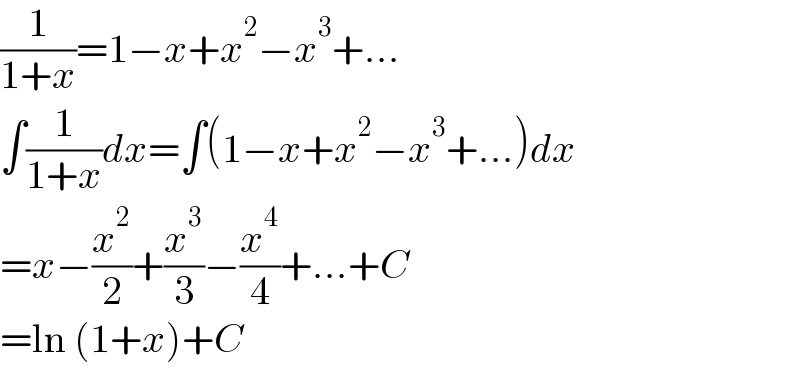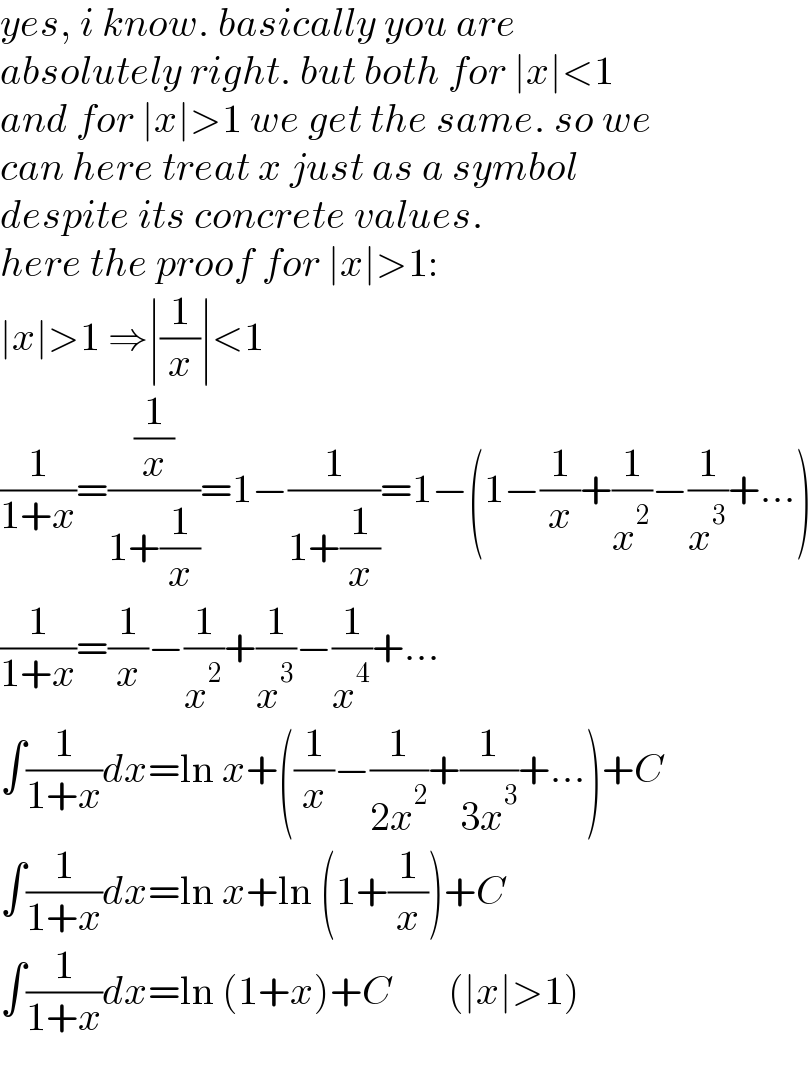
Question and Answers Forum
Question Number 134526 by mohammad17 last updated on 04/Mar/21

Answered by mr W last updated on 05/Mar/21

Commented by mathmax by abdo last updated on 05/Mar/21

Commented by mr W last updated on 05/Mar/21

Commented by mathmax by abdo last updated on 06/Mar/21

Answered by mathmax by abdo last updated on 05/Mar/21
![let f(x)= ∫_x ^1 (dt/(1+t)) if o< x<1 ⇒o≤t≤1 ⇒ f(x)=∫_x ^1 Σ_(n=0) ^∞ (−1)^n t^n dt =Σ_(n=0) ^∞ (−1)^n ∫_x ^1 t^n dt =Σ_(n=0) ^∞ (((−1)^n )/(n+1))[t^(n+1) ]_x ^1 =Σ_(n=0) ^∞ (−1)^n ((1−x^(n+1) )/(n+1)) =−Σ_(n=1) ^∞ (−1)^(n−1) (x^n /n) +Σ_(n=0) ^∞ (((−1)^n )/(n+1)) =−ln(1+x)+ln(2) ⇒∫_1 ^x (dt/(1+t)) =ln(1+x)−ln(2) (c=−ln2) if x>1 we take g(x)=∫_1 ^x (dt/(1+t)) =_(t=(1/u)) ∫_1 ^(1/x) ((−du)/(u^2 (1+(1/u)))) =−∫_1 ^(1/x) (du/(u^2 +u)) =∫_(1/x) ^(1 ) (du/(u(u+1))) =∫_(1/x) ^1 (1/u)Σ_(n=0) ^∞ (−1)^n u^n du =Σ_(n=0) ^∞ (−1)^n ∫_(1/x) ^1 u^(n−1) du = =∫_(1/x) ^1 (du/u) +Σ_(n=1) ^∞ (−1)^n [(u^n /n)]_(1/x) ^1 =ln(x)+Σ_(n=1) ^∞ (((−1)^n )/n)(1−(1/x^n )) =ln(x)+Σ_(n=1) ^∞ (((−1)^n )/n)−Σ_(n=1) ^∞ (((−1)^n )/n)((1/x))^n =ln(x)−ln(2)+ln(1+(1/x)) =ln(1+x)−ln(2)](Q134578.png)
